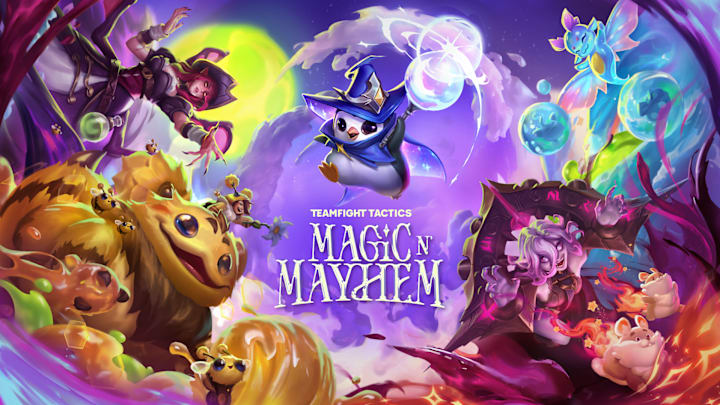How to Play Ranked in TFT

With the newest Teamfight Tactics expansion now in full swing, players getting back into the game or want to join in on the fun may need a refresher on how the ranked system works in Riot Games’ hit Autobattler.
Before hitting the convergence, here is an in depth look at our TFT Set 12 ranked explainer.
This article is part of a partnership with MetaTFT. All rankings and strategies are created using data from MetaTFT
Ranked Tiers in Teamfight Tactics
If players are familiar with TFT’s older sibling, League of Legends, the ranked system is a near perfect one for one copy. Players essentially play each game with the ultimate goal of earning LP. LP helps determine a player's rank, the more LP they earn, the higher ranking on the leaderboard they will get.
There are multiple tiers players will grind through before reaching the top.
Every Ranked Tier in TFT
- Iron
- Bronze
- Silver
- Gold
- Platinum
- Emerald
- Diamond
- Master
- Grandmaster
- Challenger
Although the ranked tiers function the same as League of Legends (each having four divisions until Master), the way LP is earned is different. With eight players per lobby, “winning” is classified as placing in each game's top half while losing is in the bottom half. Exact placement will determine how much LP is gained and lost. A player might receive 50 LP for first place but also might lose 50 LP for eighth place.
Related Article: Teamfight Tactics Magic n' Mayhem Charm Explained
There are no promotional series in TFT, meaning once a player reaches 100 LP in a division, they will automatically proceed to the next highest tier with one exception being Master and above
How does Master/Grandmaster/Challenger work?
Once a player reaches Master rank, LP scales infinitely. Instead of reaching an LP threshold, players in Masters and above are competing for a number rank with the difference between Master, Grandmaster and Challenger just being how many people are above or below a player.
There is an LP floor that one must have to reach the minimum LP required to hit Grandmaster and Challenger. A player must have at least 250 LP to qualify for Grandmaster and at least 500 to qualify for Challenger.
However, these minimums will likely not nearly be good enough to qualify for these respective ranks as the season goes on. That’s because there are a set number of spots available for Grandmaster and Challenger at any given time.
The top 250 players in a region will be placed into Challenger with the top 500 players right below Challenger being put into Grandmaster for a total of 750 players, any player below those players will automatically be put in Master.
Every 24 hours, the ladder calculates the current LP thresholds to qualify for each tier and adjusts players accordingly. Meaning that on one day it could take 550 LP to qualify for Grandmaster and the next day it could be 560 LP.
Ranked Resets
Ranked resets at the beginning of each expansion with expansions happening every four months.
Related Article: The Top 10 TFT Set Mechanics
At the beginning of an expansion, TFT hard resets rank back down Iron but MMR does remain intact meaning that although a player might have harder lobbies being reset back down to Iron, they will have way faster gains for placing well.
For mid-set updates, players will only be reset one full tier below their end rank. This means that if a player finishes Set 9 in Diamond 1, they will be pushed back to Platinum 1. For players Master tier or above, they will automatically be placed in Diamond 4.
